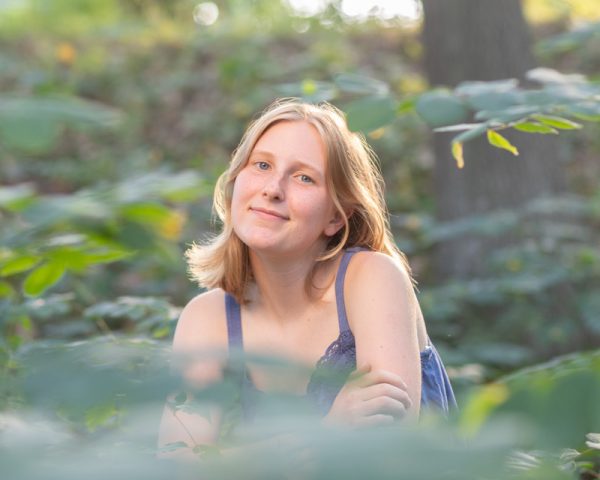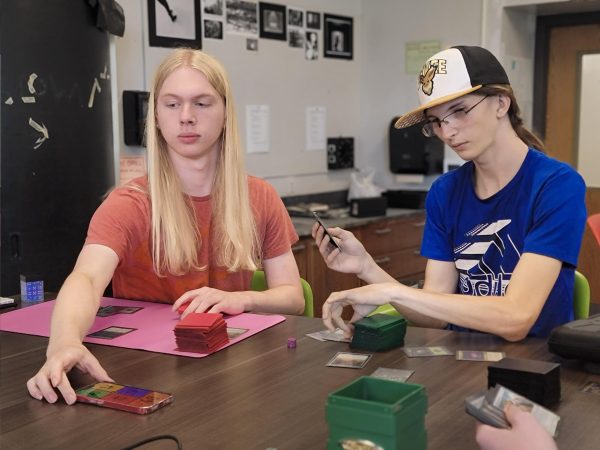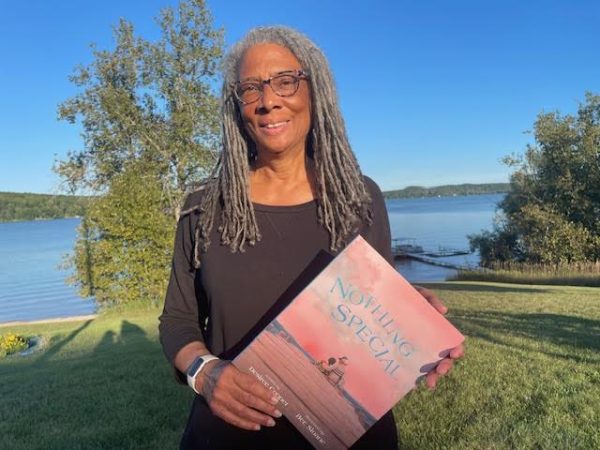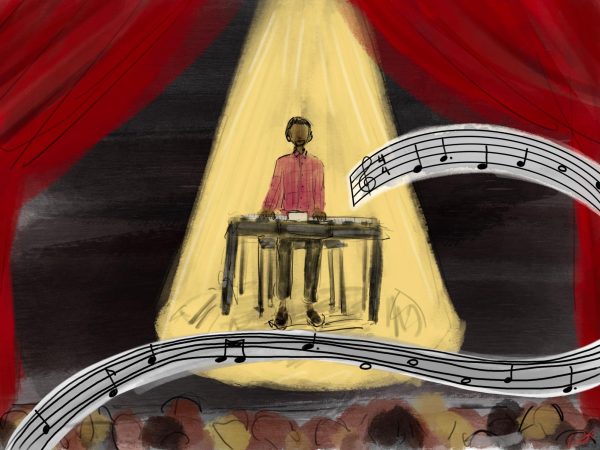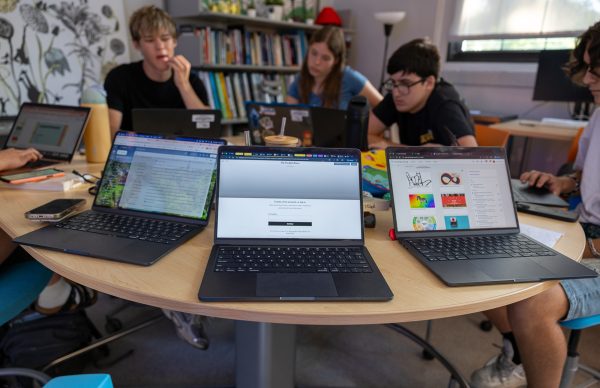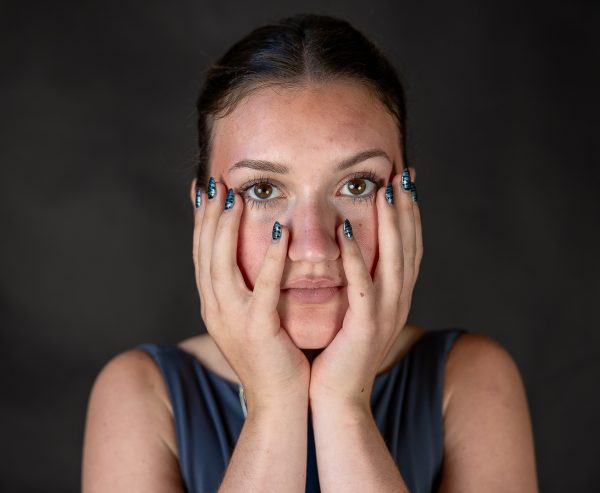“We were safe and we were happy”: Armed Gunman at MSU Robs Students of Their Security
It is a perfectly unremarkable Monday — classes have ended, the last of the light has just bled out of the sky above campus — but Katie Mayer has found herself huddled in the dark of a basement boiler room with thirty of her peers, in a building they have never before been inside, all of them afraid for their lives.
“We were just in a closet, with no lock on it or anything,” said Mayer, a sophomore at Michigan State University (MSU). “We couldn’t even barricade the door because it opened outwards.”
She struggled to wrap her head around the situation. Just minutes before, she and her peers had been walking out the door for a post-meeting study session at the MSU Union. They’d been stopped in their tracks when the student leader of her business organization announced that a shooting had just been reported there.
Upon hearing the news, they ran for the nearest building, where they were met with locked door after locked door until they were finally able to take shelter in a boiler room. The students were left scrambling, with no direction of what to do beyond a brief missive from administration instructing them to “run, hide, fight.” The group had no adult leader, so it fell to the panicked students to decide how to handle the situation. It was immediately clear that their hiding place was not secure, but they were left with no clear solution.
“Everyone was so freaked out that no one wanted to go walk around the building to find a better spot,” Mayer said.
For the next four hours, they remained cramped together in the stale dark, completely terrified. From the first shots fired, at around 8:30, to the all clear from police officers on the scene, after midnight, they sat in complete silence.
“We kind of felt like the only thing we had going for us in that room was just the hope that if a shooter did walk by they wouldn’t notice us there,” Mayer said. “The door wasn’t even locked.”
The tense quiet was punctuated only by low volume alerts from the police scanner, which students listened in on from their phones and did nothing to alleviate the fear that permeated the room.
“They announced anything people called into the police, any reports,” Mayer said. “So we kept hearing about all these other crazy things that were happening, and gunshots in other places, and this and that.”
Although many of the reports were false alarms, the effect was unnerving.
“[Someone] would hear this thing on the scanner and then announce it to everyone as if it was a fact,” Mayer said.
Around campus, students tuned in to the police scanner from behind hundreds of heavily barricaded doors.
Cecelia Branson, another MSU sophomore, was shuttered inside another building—in close proximity to the active shooter. She’d been in the midst of a meeting for International Relations Organizations with ten other students when they found out that other students were being shot down just minutes away.
She felt like she was in a fishbowl, surrounded by windows and all too accessible on the first floor of the building.
“Luckily the projector screen went in front of the windows,” Branson said. “So we put that down so that no one could see in the window and then we got underneath tables.”
She and the students around her huddled together in wait as they listened to the police scanner and official press conferences—anxious for any news.
“We were listening to where [the shooter was] going,” Branson said. “The only time that people in my room got really freaked out was when there was a report saying that the shooter was in Bessie Hall.”
Bessie Hall: only a building away from where they were concealed.
Fortunately, the report turned out to be inaccurate. Although tuning into the police scanner provided valuable information to students cowering across campus, inaccurate or exaggerated information was continually snowballing.
Caitlyn Donnelly, a freshman at MSU, felt as though all her fears were amplified every time she heard another update.
“If you look at it from an outsider’s perspective, they’re like, ‘oh, it was only three people, he was only in these two buildings,’” Donnelly said. “But we thought [the shooter] was everywhere.”
Over the course of the lockdown, Donnelly heard that there was an armed individual just outside the building she was inside, then that the shooter was in her neighborhood and then that there were three shooters. This is not to mention the rumors of explosives in the building she was in, that weren’t assuaged until police officers gave the all clear.
“I thought [the shooter] was all over campus,” Donnelly said.
Just hours before, Donnelly had been accompanying her friend — who needed to buy a last minute Valentine’s gift for her boyfriend — to Target. They saw the police cars before they even got the message.
“We stopped at the Broad Museum, which is like the big geometric [building] and we saw these red and blue police lights reflecting off of it,” Donnelly said. “I get sick thinking about it, but I was like, oh, it looks kind of pretty.”
Police cars and sirens aren’t an unusual sight at a college campus, so she and her friend weren’t initially alarmed. As they continued walking though, the emergency vehicles flashing by seemed like more than the usual response to typical campus emergencies.
“There are ambulances or police cars pretty much every day,” Donnelly said. “But it’s usually nothing, like someone drank too much, or passed out, and they’re really fine.”
Just ahead of them they saw people walking out of a building with their hands up and they knew it was time to run. As they hurried back to their dorm, they got the notification: there was a shooter on campus.
And so, mere minutes after smiling and laughing with her friend, Donnelly found herself sobbing on the floor of a dorm room.
“It was so surreal,” Donnelly said. “I’d just been thinking about how much I love the campus and how safe I feel and how happy I was there, and then it was all just terrible.”
In the aftermath, there was widespread shock and a great flood of students leaving campus.
Donnelly’s parents, minutes after hearing that their daughter was in danger, drove straight to Okemos, where they waited at a Dunkin’ Donuts with other terrified parents until the all clear was given for them to gather their children.
“I know people were trying to leave, but it still surprised me how many cars were moving at that time,” Mayer said. “[The stay-in-place order] had just gotten lifted, so the fact that people were leaving that quickly really showed me the urgency of the situation.”
Mayer left the following morning — as soon as she could get a ride home. She couldn’t imagine staying alone in her dorm room to dwell on the events of the past 24 hours.
Branson, originally from Cincinnati, stayed in a hotel room with her mother, watching from a distance as her campus turned into a ghost town.
“Every time I would drive around campus it was just so weird,” Branson said. “No one was there.”
The bustle of student life was replaced by caution tape, flowers and news cameras.
“Even being in the hotel I was just like, I have to get out of here,” Branson said. “I can’t stay here.”
The ordeal swept each of them completely off of their feet. Eight of their peers were gunned down at the place where they were supposed to be safe and happy — the place where they had been both.
“I had a class right across from [the site of the shooting] earlier that day,” Donnelly said. “They were just like me, going to class, or studying at the Union, and now they’re dead.”
Arielle Anderson, Brian Fraser and Alexandria Verner were killed, and five other students were injured.
Looking forward, Branson, Donnelly and Mayer agree that some things will inevitably change.
They will no longer feel safe in the quiet darkness of campus. There will be no more late night trips to Meijer for Donnelly and there will be no more evening buses for Mayer — even the five minute walk to her dorm feels like a risk not worth taking.
Further, they recognize that campus regulation will have to evolve, like public access to some buildings, including the Union. The attack occurred during hours of public access for both buildings.
“It’s nice that everyone can use the buildings,” Mayer said. “But if it can’t work that way without people dying, then [they just can’t].”
Berkey Hall, one of the two sites of the attack, will be closed for the remainder of the semester, with all classes held there displaced to other buildings.
Despite the havoc the event has wreaked on their lives, they, and the majority of their peers, are determined to reclaim the happiness they’ve worked so hard for.
“You can’t let one man take away your joy,” Donnelly said. “That’s what he wants. You have to take back your campus, and live your life.”
